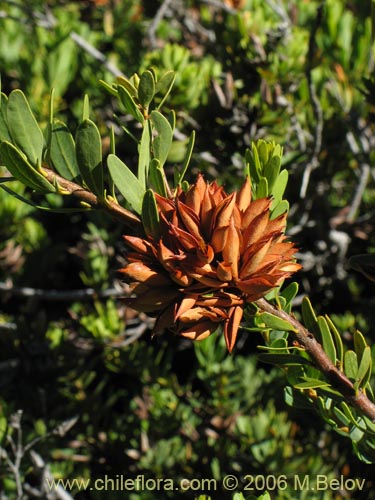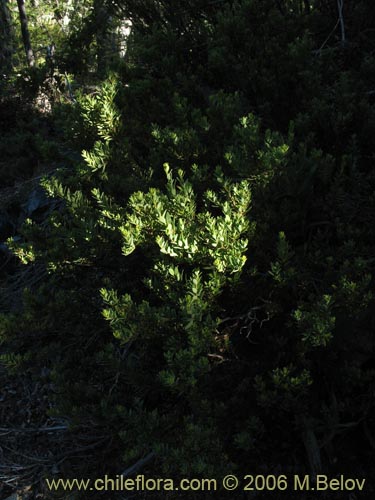Cierre esta ventana
Entrar a la Tienda de Semillas

|
||||||||||||||||||
This is an endangered and truly rare Chilean plant which few people have seen. It grows only in a few locations in Chile in very specific environmental conditions; what is more, in most locations there are just a few plants. But it is a truly amazing shrub, since it can grow in lava fields where no other tree or brush can grow. In the sping in flowers with beatiful densely-pacted flowers, and in autumn the fruits glow with reddish-brown color, contrasting with the green foliage and the blacklava. If you are looking for an exotic shrub which would reflect the spirit of the Chilean volcanic Andes, this is the plant to go for. This is an evergreen shrub which grows up to 2 m, but mostly is rather low (0,5 - 1 m) and wide, forming sometimes large groups which extend for 5 to 10 m. The leaves are coriaceous, about 3 cm long and 1 cm wide, with short petioles, oblong. The flowers come in compact racemes, of whitish or yellowish color, flowering in October and November. The seeds are winged, about 1,5 cm long and appear in February and March. This plant is difficult to grow because of its rather strict habitat requirements: volcanic soil, middle altitudes, lot of sun, enough water. It grows in Central-southern parts of Chile, in 7-9 regions. Prior to planting, the seeds should be soaked in gilberic acid for a day or so. The soil must have good drainage? and preferibly be volcanic sand, with some organic matter added. If no volcanic sand can be found, some acid soil may work as well (lava is acid?). The seeds generally germinate well, and initial growth is good, but be warned, that unless the environmental conditions (soil, watering, sunlight, and temperature) are right, the plant often dies later. It is ideally suited to be grownin mountain areas with some snow cover. Another germination strategy may be the normal stratification procedure (moist sand at 5?C for a couple of weeks and than warmer temperature). - |
||||||||||||||||||


